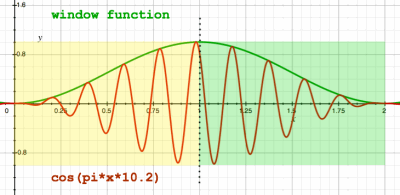
Below, I have done a visual impression of such signal wrapping.
Notice that the window stretches over two subsequent signal blocks.
 |
The second block is wrapped over the first one, summing the sample
values, and the total is put in one FFT analysis.
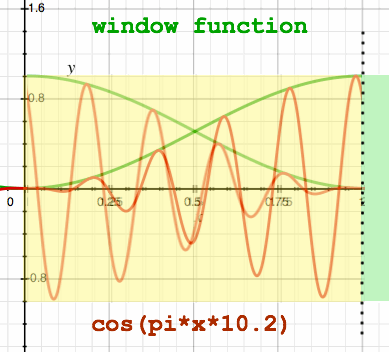 |
From the figure, it seems that the function as it appears to the
FFT, is now periodical. Here is another impression of signal wrapping,
with the samples summed in the third figure:
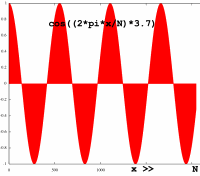 |
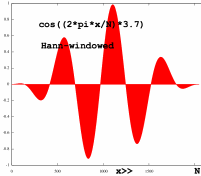 |
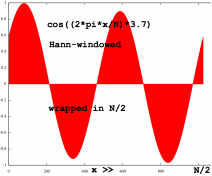 |
Ok, it is now periodical within the FFT frame, but it is not 1
frequency anymore, since it is modulated. Let me check what the
spectrum looks like. Maybe not so surprising, it is similar to the
N-point spectrum of the original input, only the wrapped version is
compressed to a N/2 point spectrum.
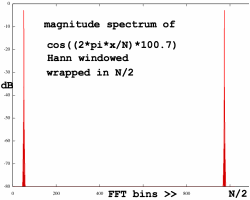 |
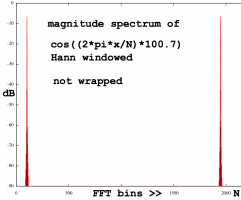 |
Notice the difference in size. Accounting for it's N/2 spectrum
size, the wrapped version has a remarkable leakage character. In terms
of unit bin width, the main lobe is reduced to half size: two bins
instead of the four bins that are normally associated with a Hann
window. It is really the N-point spectrum translated to N/2 point
resolution: a factor 2 downsampling of the spectrum. It is the opposite
of the zero-padding that I used to generate the upsampled spectra on
the previous page, to
inspect the
Dirichlet functions.
What is the use of this spectrum downsampling? Would we not rather
need a more accurate spectrum instead of a less accurate one? Well...
since the windowed Fourier transform of a pure sinusoid is by
definition a Dirichlet sum with four coefficients in it's main lobe,
why not just summarize these in a spectrum of lesser resolution? It
reduces the risk of accidentally chopping a main lobe with a sharp
filter.
To improve the leakage character, an extra window function is
applied. It is a sinc function: FFTsize*(sin(pi*x/FFTsize)/(pi*x)).
Because the periodicity of the sinc function is dependent on the FFT
frame size and not the input block size, the resulting window function
depends on how much of the input you want to wrap in one FFT analysis
frame:
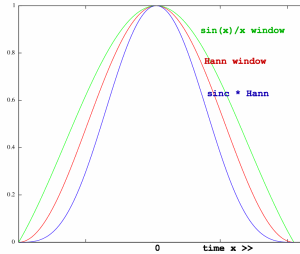 inputblock = FFTsize*2 |
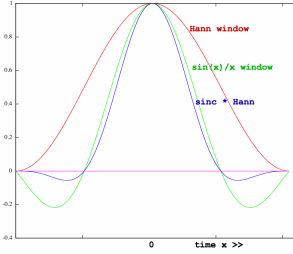 inputblock = FFTsize*4 |
These windows do not produce a constant sum when they are
overlapped. Without demodulation, it would look like this:
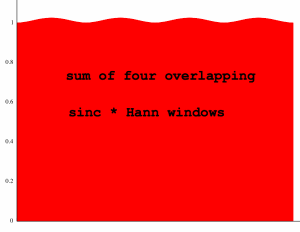 inputblock = FFTsize*4 |